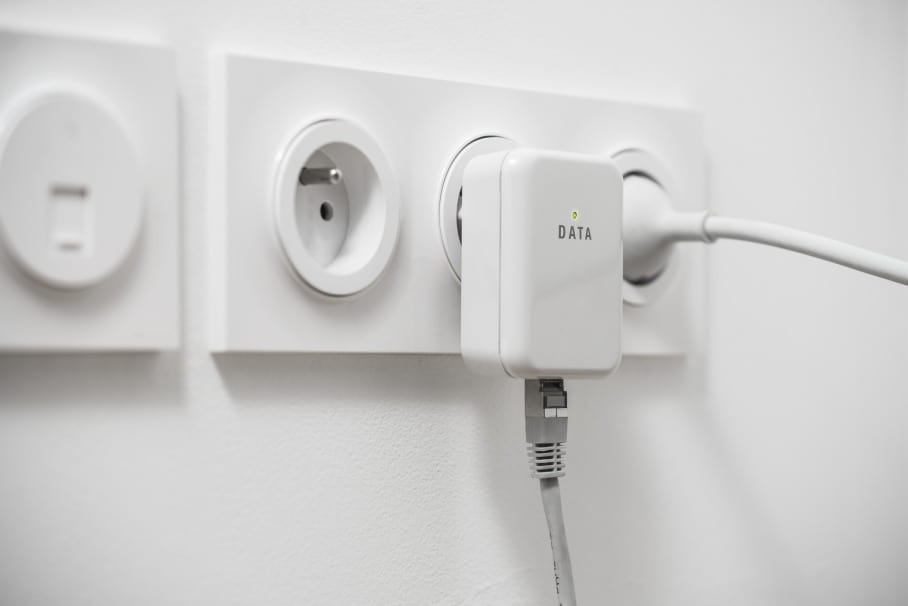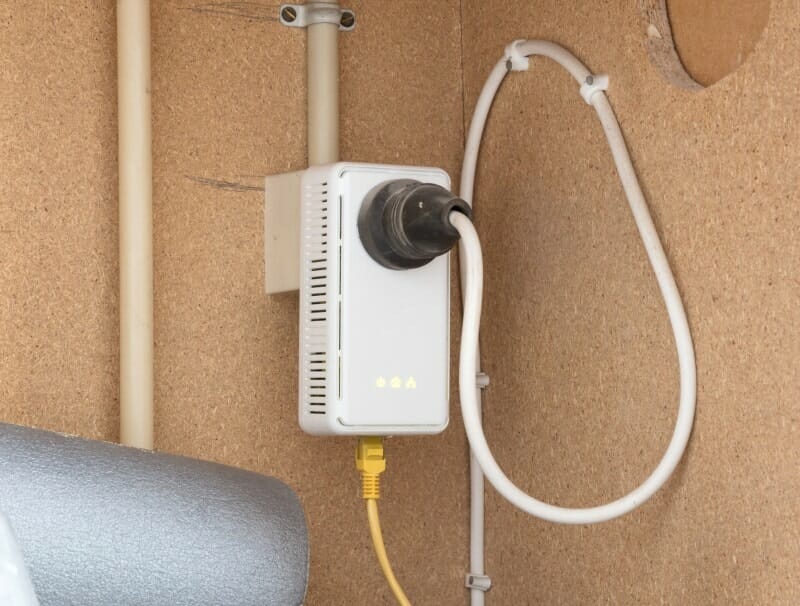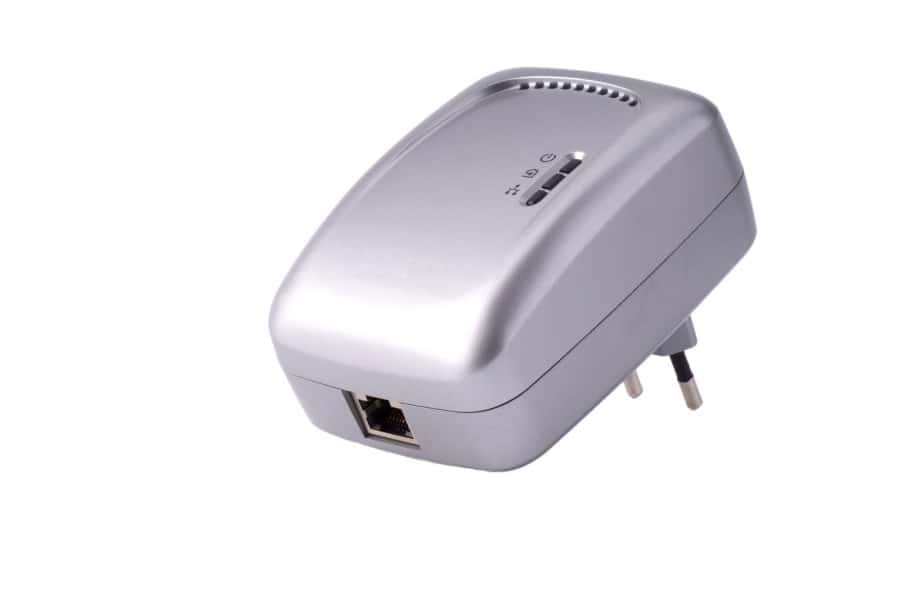Are you frustrated with the weak WiFi signal at home and have no option for an ethernet connection? It might seem like you have no choice, but this is only because you do not know that you have a third way to connect to the Internet.
With the emergence of wireless Internet connections, chat, work, video call, and research from any part of your house became possible. However, WiFi has its downsides, mainly weak spots and a slower connection than ethernet. Going back to being wired, it is not always possible in areas of the house too far from the router unless you want to be lugging around several feet of wires all around the place.
Table Of Contents
Try A Powerline Ethernet Adaptor
Your third option is to connect via a powerline ethernet adaptor. It is the closest you can get to an ethernet connection without laying in new cables or dragging one everywhere. Instead, you will utilize the existing electrical wiring of your home to connect to the Internet. Interestingly, it’s much simpler than plain ethernet, and users can expect better-than-WiFi connections.
You will still use an ethernet cable and adaptors to connect to the home electrical network. So you are still using a wired connection, which is always better and more reliable than wireless.
How Does A Powerline Ethernet Adapter Work?
When you buy a powerline ethernet adaptor kit, you receive 2 separate adaptors to be plugged into your electrical outlet. You will also need the usual ethernet cables. First of all, you need to plug in the 2 adaptors, at best directly on the wall outlet, and not use any extension wires or multi-plug chargers.
They must be plugged in at the closest outlet to your router and where you want to work. The next step is to connect the router with an ethernet cable to the adaptor and then the 2nd adaptor to your computer or device.
The first adaptor will transform the ethernet connection from the router into a powerline protocol. Data becomes transmitted using electrical signals that can travel from one part of the house to another through the wiring.
When it comes out of the second adaptor, the signal transforms into an ethernet connection that your computer needs.
Is It Any Better Than WiFi?
There is no doubt that WiFi is the most flexible connection available out there. You can walk around your house with your smartphone or laptop and not worry about your connection.
In a perfect world, WiFi gives robust and equal connectivity, regardless of where you are. In reality, walls will interfere with signals, and too much traffic increases the risk of slowdowns and drops.
Plus, you are more likely to lose the connection if you are only connected wirelessly compared to a wired one. The difference is even starker when you do more than just web browsing, like playing games or watching videos.
A powerline ethernet connection is a good option if you have a weak WiFi connection at a particular part of your house or if you need a faster and more reliable wired connection.
The same goes for you having a lot of devices connecting to the Internet simultaneously and when you are transferring lots of data over the Internet. If you are a gamer, you might find the connection much better, lowering the risk of losing your game due to unstable Internet.
How Is The Connection Of Powerline Ethernet Adaptors?
Without a doubt, this kind of connection is much faster than WiFi, but how does it compare to a genuine ethernet connection?
Powerline adaptors are designed to deliver the same speeds as connecting directly from your computer to the router. Still, it cannot always promise to do so as some factors may affect connection speeds.
If your building or home has an electrical layout more complex than others, it might affect your Internet speed. The best way to find out is to compare both connections, and if you notice the powerline is slower, it might be due to your electrical wiring.
You might also find this connectionless secure if you live in a building with other people, like in an apartment complex. This is because your neighbors might share your electrical wiring. Fortunately, top products have added security measures against this, like point-to-point encryption to protect whatever data is transferred along the electrical wires.
The best thing about powerline adaptors is that you can connect several devices with an ethernet switch. This means you can maximize your powerline ethernet adaptor and your electrical network to deliver fast and reliable Internet to various gadgets. This is a good solution if you need to set up an office in a room far away from the router.
Summary: The Pros and Cons of Powerline Ethernet Adaptors
Are you looking for an alternative to an unreliable WiFi connection at home without laying out many new cables? You should consider installing powerline ethernet adaptors at home.
These are the possible advantages of this connection:
- No more laying of ethernet cables
- Faster and more reliable connection compared to WiFi
- Setting it up is very easy and uncomplicated, requiring only a few minutes
- It does not use up a lot of electricity
- A good option if you need to connect a few devices in one room far away from the router
However, some disadvantages might make this a not-so-feasible solution for your home:
- They need to be plugged in directly to the wall outlet and not on an extension cord, which is not good if you have a limited number of plugs at home
- In some cases, the electrical grid may be too complicated or not ideal for a powerline ethernet connection
- The adaptors themselves are pretty bulky and take up space, even covering other plugs
The best solution is to try it out at home and compare speeds between your existing ethernet, WiFi, and a powerline ethernet connection. Only then can you be sure that it meets your needs.




